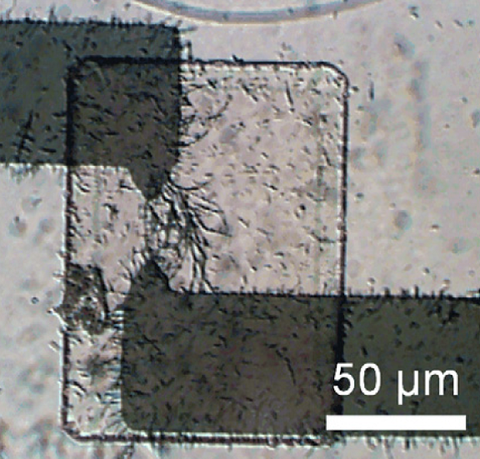Subproject 8: Electro-mechanical modeling and metrological evaluation of I-FRCs with material-integrated sensors
Motivation
To monitor and actively influence the deformation properties of elastomers in situ, complicated external measurement equipment is currently required. Carbon allotropes or magnetic microparticles that can easily be integrated into the material allow the achievement of sensor properties even at very low admixtures. Another approach towards integrated sensor functionality involves sensor networks made from thread-shaped, strain-sensitive electrical conductors, e.g. metallized threads or carbon fibers (TP2). Both approaches are suitable as self-diagnosis measures to monitor the deformation state in adaptive, integrated fiber rubber composites (I-FRCs) without affecting the structure negatively. Therefore, it is the goal of this project to derive suitable electro-mechanical sensor models that describe the spatially and directionally dependent state variables of the system as well as the influence of disturbing effects. The long-term stability of these interactions, the influence of geometric non-linearities, and complex deformations are significant factors as well.
State of the art and preliminary research
Previously, it was shown that magnetic nanoparticles can be dispersed in hydrogels. This allows to measure the swelling of these hydrogels as a result of external stimuli (e.g. pH-value) magnetically. The PI himself has been working for many years on the application of hydrogels with their stimuli-responsive behavior and viscoelastic properties in sensors. Additionally, the usage of polymers with conducting fillers for high-detective temperature and radiation detectors has been reported. Since percolation takes place already at a few percent of filler in the polymer volume, such resistors behave electrically like (semi)conductors and technologically like polymers. In principle, such sensor elements can be integrated into I-FRCs with the required spatial distribution.
Scientific questions and project objectives
The subject of this project includes textile- and particle-based sensor networks to be integrated into I-FRCs to measure deformation, stress, and strain with directional and spatial selectivity. This should be achieved by sensors comprising resistive or magnetical microparticles that are locally distributed in the elastomer. In contrast to TP7, system-capable device models are required that describe the spatial distribution of the relevant quantities to enable a location- and direction-dependent status control. For that, finite electro-mechanical network models will be used. A particular focus should be laid on the sensor’s long-term stability, on hysteresis effects as well as on transient temperature fields. System-theoretical approaches will be used to correlate the information of the structure-integrated sensor networks with the measured local and global strain and deformation fields. These results are taken for the real-time configuration of the I-FRCs including the optimal location of the sensors and actuators and for the design of the control circuit.
 © IFE/TUD
© IFE/TUD
Mr Prof. Dr.-Ing. habil. Gerald Gerlach
Institutsdirektor
Send encrypted email via the SecureMail portal (for TUD external users only).
Visiting address:
Günther-Landgraf-Bau 7-E01b Mommsenstraße 15
01069 Dresdem

